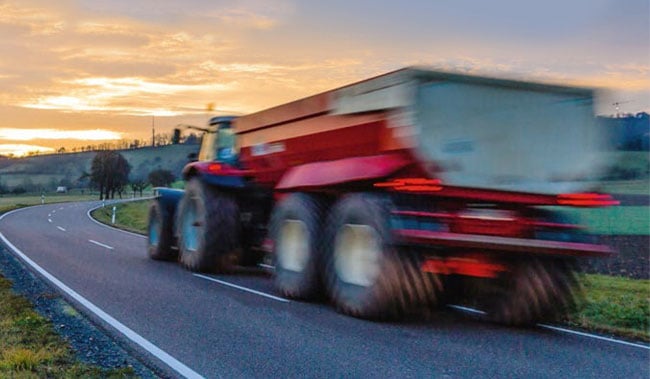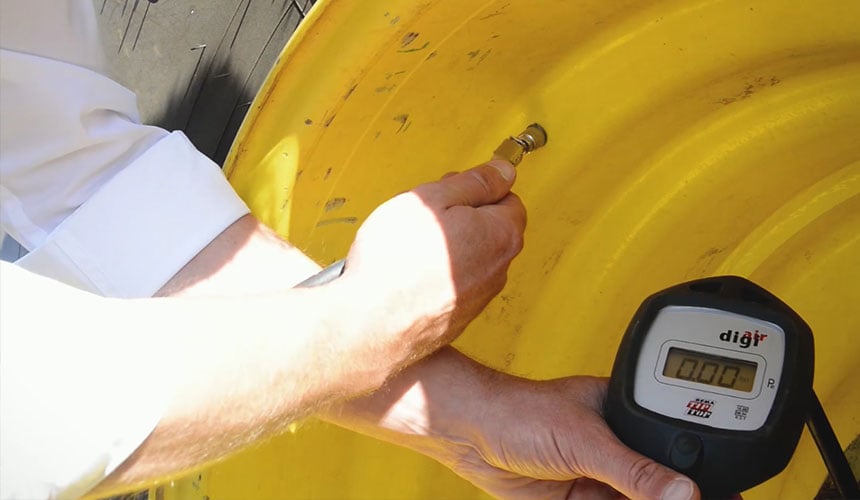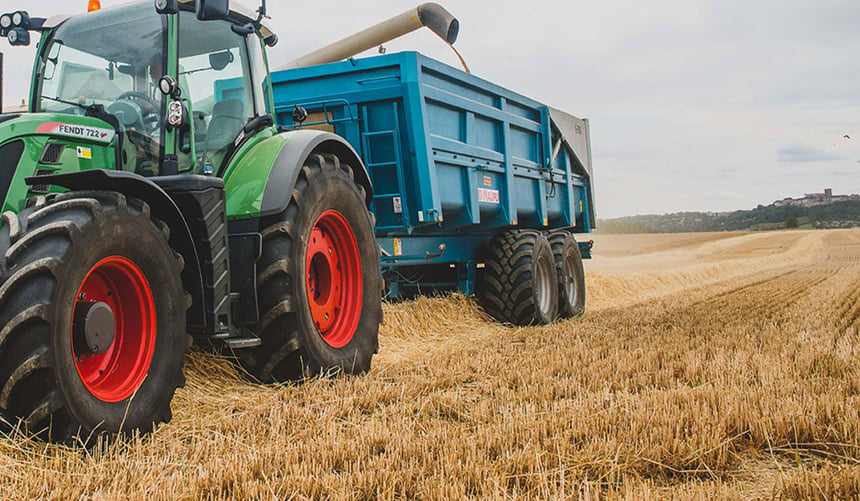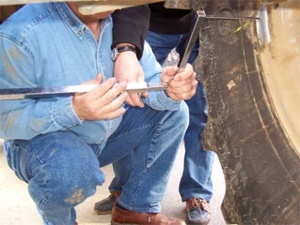Changing tyres is a costly exercise, albeit one that's inevitable and important. However, it is possible to reduce the frequency with which you have to replace your tractor tyres by taking into account the myriad parameters that altogether will save you 1,000 hours per tyre, and all the money associated with that too.
A great solution for optimising your farm's profitability.

Driving on bitumen is what wears your tyres the most, as its surface is a mixture of aggregates, gravel, crushed rock and sand that forms a micro-roughness layer. While this is good for helping your rubber grip to the road at low speeds, when you change direction, accelerate or decelerate, your tyre will slide slightly. Since bitumen is a very hard surface, this slight slippage will act like sandpaper on the rubber, leading to maximum wear.
Driving faster on the road might save you 5 minutes on your journey, but your tyres will be worn twice as much and your fuel consumption will be higher. It's therefore the worst calculation you can do – a more relaxed, regular drive will reward you with significant savings on your tyres in the long run.
 Incorrect pressure is your tyre's worst enemy, but it's a tricky issue. You no doubt understand that you need to increase the contact surface area of your tyre with the ground to avoid soil compaction, which means you need the lowest tyre pressure possible, but on the other hand when you drive on the road you need the highest pressure possible to reduce the amount of rubber in contact with the bitumen and thus minimise rolling resistance and wear.
Incorrect pressure is your tyre's worst enemy, but it's a tricky issue. You no doubt understand that you need to increase the contact surface area of your tyre with the ground to avoid soil compaction, which means you need the lowest tyre pressure possible, but on the other hand when you drive on the road you need the highest pressure possible to reduce the amount of rubber in contact with the bitumen and thus minimise rolling resistance and wear.
You don't really have much of a choice – if you want your tyres to last, you need to always have a good compressor and pressure gauge to hand. It might take a bit of time, but it'll be worth it.
 If you overload your trailer or hitch mounted or semi-mounted tools that are too heavy, the weight of the tractor will crush the tyres. When a heavy tool transfers too much load to your tractor's rear axle, it's the tyres that will bear the brunt of this by deforming and caving in on themselves.
If you overload your trailer or hitch mounted or semi-mounted tools that are too heavy, the weight of the tractor will crush the tyres. When a heavy tool transfers too much load to your tractor's rear axle, it's the tyres that will bear the brunt of this by deforming and caving in on themselves.
If the soil is hard, the tyre's lugs will bend under the tractive force. The deformation due to compression will be lateral and affect the sidewalls, which are not designed to be subjected to so much force. The pressure due to this weight on the rubber will heat up very quickly when driving on roads at speed, and wear will also be very quick.
The financial cost will be the first visible consequence of overloading, with accelerated tyre wear and a 25-50% shorter life span depending on the weight of the excessive load.
Swapping tyres around is a good way to distribute wear, especially if you notice it's slightly uneven (e.g. more on the right than the left, or only on a small part of the lugs).
Swapping tyres around will save you time, but you should still investigate the cause behind this uneven wear. There are some standard ones, such as misalignment or a problem with preponderance:
 Wheel alignment must be regularly checked, because during use your tractor will drive over ruts, follow deep furrows or come up against obstacles (stones or branches), all of which may disrupt alignment.
Wheel alignment must be regularly checked, because during use your tractor will drive over ruts, follow deep furrows or come up against obstacles (stones or branches), all of which may disrupt alignment.
Alignment involves adjusting the two wheels to ensure they're in line with the axle. Ideally, your tyres should be perfectly parallel to your tractor. If the front of your tyres is pointing slightly inwards they're said to be toe-in, and if the front is pointing slightly outwards they're said to be toe-out. In either case, they need to be adjusted to reduce wear.
Preponderance is the synchronisation of the front tyres with the rear tyres. When properly set, it should allow your front tyres to pull slightly more than the rear tyres.
If the rear axle impedes the front axle, the front tyres will wear quicker than the rear ones. Conversely, if the rear axle pushes the front axle forward, there will be too much slip in the rear axle and therefore more wear at the rear.
Production quality and the type of materials used dictate a tyre's life span. Different types of rubber can have varying degrees of softness and will react to wear differently, meaning it's not a question of comparing soft and hard rubber but the specific type of rubber used. This goes against the common misconception that rubber can be soft and wear-resistant.
The latest generation of tyres have been designed for optimal service life and maximum hours of use. Thanks to the use of improved materials, larger lugs, the more rubber used, optimising casing structure and reinforced tread, new tyres can last up to 20% longer than previous models in identical usage conditions.
The tyre that best showcases this maximum wear resistance is the latest model in the Bridgestone range, the VX-Tractor. The manufacturer even offers a 10 years guarantee on radial Bridgestone tyres.
The most people who have read this article have also read the following articles, which are listed below in order of popularity:
This information is intended only to make you aware of the technical and functional aspects of agricultural tires and their use. It does not allow you to make a judgment or a definitive conclusion on a given problem. Only your agricultural tire expert is able to make a technical assessment and take a final decision, case by case.

BRIDGESTONE EUROPE NV/SA
AG Department
Leonardo Da Vincilaan 1
1930 Zaventem | Belgium
Our regional office:
Athena Drive, Tachbrook Park
Warwick CV34 6UX
United Kingdom